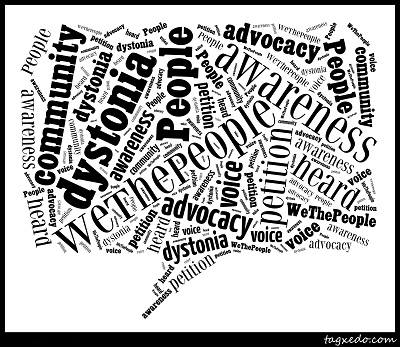 Imagine what it would be like to be the middle of talking and discover you can’t shut your mouth for 10 minutes as your jaw muscles fight every effort to close it.
Imagine what it would be like to be the middle of talking and discover you can’t shut your mouth for 10 minutes as your jaw muscles fight every effort to close it.
Picture yourself standing in the shower when all the muscles in your lower body either suddenly weaken—or your limbs start jerking around like a puppet on a string—causing enough imbalance for you to collapse on your face in the wet tub floor.
Envision not being able to chew—or do much of anything with your body for days, weeks and months on end—because your neck, shoulder and jaw muscles continuously disobey your mind by painfully yanking your head to the side again and again. Can you feel the constricting of your throat, making it hard to swallow? Can you feel the severe pain from the top of your head to the middle of your torso?
Imagine what it might be like to be stuck in a sort of semi-consciousness state for hours—you are trapped in a body that willfully does not move at all, yet your mind is active and battling to take back movement control. Sometimes you find yourself stuck in unnatural poses and freeze.
These are some of the scenarios I’ve had to face as a person living with dystonia. Dystonia is a neurological disorder that causes muscles to involuntary contract leading to repetitious movements or unusual poses you get stuck in.
It can affect just the neck, jerking your head back and forth or pulling your head to one side; this is known as cervical dystonia. Blepharospasm can affect the eye muscles, causing spasms and excessive eye blinks. Others with dystonia have trouble with speaking, writing or playing an instrument with the mouth. Then there are those, like myself, who experience symptoms all over the body, with episodes seem to come out of nowhere.
Dystonia is the third most common movement disorder, after essential tremor and Parkinson’s Disease. According to the Dystonia Medical Research Foundation, it affects several hundred thousand people in the United States, including children. Dystonia may be inherited, or result from neurodegenerative diseases, stroke, physical trauma, etc. Tardive dyskinesia, a form of dystonia, results from a side effect of certain medications, including neuroleptic drugs. In my case, autoimmune disease is thought to have started attacking my brain, causing dystonia. As each patient’s manifestation of the disease varies, it can be very difficult to get properly diagnosed and receive treatment to help with the symptoms.
As a result of the limited awareness of the disease, the dystonia community is petitioning the Obama Administration to recognize September as Dystonia Awareness Month. Please consider adding your name to the petition http://wh.gov/lo9Yh You must be at least 13 years old to sign it. The deadline to sign the petition is coming up fast—June 26. Invite your friends and family to sign or simply share this article with others!
[youtube https://www.youtube.com/watch?v=1sBSdHdEKJg]
By signing this petition, you are not just helping to bring public awareness to this debilitating disorder. You are also supporting research to find better treatment and a possible cure. Finally, increased awareness can help those living with the symptoms of patients get properly diagnosed, and their doctors more knowledgeable to do so.
[…] in skin color, texture and temperature. People with CRPS may also have motor dysfunction (including dystonia), excessive sweating and extreme sensitivity to temperature, sound, vibration and […]